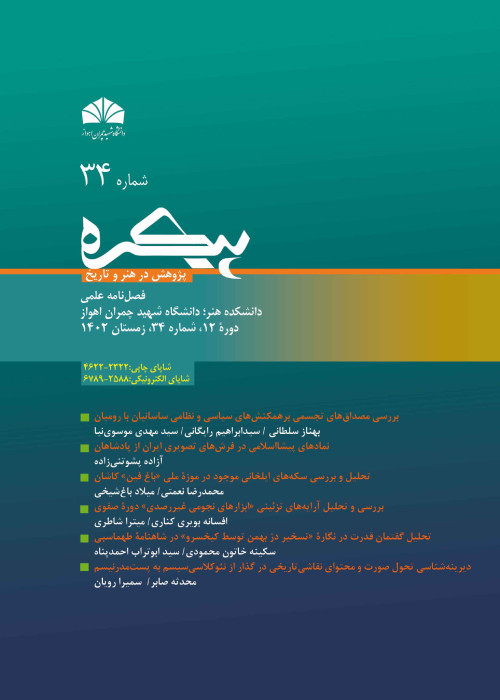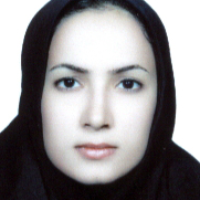Human Figure Iconology is Two Pieces of Textile from Sassanid Era (With Images of the King’s Battle and the Tree of Life)
Author(s):
Article Type:
Research/Original Article (بدون رتبه معتبر)
Abstract:
Throughout centuries, artistic creations have represented the culture and beliefs of every ethnic group, becoming inseparable from their art history. What remains from the Sasanian era is of special significance because of the political, religious and economic events of the day, and interpreting them helps discover more of the secrets buried in the period. Motifs are the most prominent feature of Sasanian art. The fabrics remaining from the Sassanid period are an important source to study the motifs of this period. These fabrics include elements with broad structural, religious, and mythological concepts. Studies show that there are many basic approaches to literary and artistic studies, including the iconology approach which has a relatively special place. Studying art, especially textiles, and reading the motifs of fabrics through iconology can remove many ambiguities in this regard, because this method uses description and analysis to examine the motifs and elements of fabrics and identify their implicit meanings and the reasons for their coincidence. With this in mind, this article aims to delve deeper into the symbols and signs of the fabrics of the Sassanid period and analyze their semantic layers. Aiming to fulfil this objective, the present study seeks to answer this question: “What are the hidden and semantic layers ofthe human figures on the two pieces of textile from Sassanid Era with images of king’s battle and tree of life, based on the iconological approach?” The hypothesis is that by exploring the superficial forms of the motifs of these two pieces of fabric and determining and interpreting the symbols, it is possible to come to their iconographic interpretation and identify at least some of the most meaningful symbolic meanings as a decorative element and a feature of Iranian art. Many studies have dealt with the motifs and symbols of the Sassanid period and the iconology approach. For example, Neda Akhavanaqdam (2017) studied the metal utensils of this period from an iconographic point of view, introducing symbols and discussing the motifs of hunting, ritual and court ceremonies in this period based on the metal art of the Sassanid era. An Introduction to Iconology by Nahid Abdi (2012) has described this approach and clarified the path of this theoretical study to the reader. This book can be a useful guide to the study of Sassanid motifs with this approach.
Keywords:
Language:
Persian
Published:
Paykareh, Volume:8 Issue: 17, 2019
Pages:
40 to 61
magiran.com/p2104181
دانلود و مطالعه متن این مقاله با یکی از روشهای زیر امکان پذیر است:
اشتراک شخصی
با عضویت و پرداخت آنلاین حق اشتراک یکساله به مبلغ 1,390,000ريال میتوانید 70 عنوان مطلب دانلود کنید!
اشتراک سازمانی
به کتابخانه دانشگاه یا محل کار خود پیشنهاد کنید تا اشتراک سازمانی این پایگاه را برای دسترسی نامحدود همه کاربران به متن مطالب تهیه نمایند!
توجه!
- حق عضویت دریافتی صرف حمایت از نشریات عضو و نگهداری، تکمیل و توسعه مگیران میشود.
- پرداخت حق اشتراک و دانلود مقالات اجازه بازنشر آن در سایر رسانههای چاپی و دیجیتال را به کاربر نمیدهد.
دسترسی سراسری کاربران دانشگاه پیام نور!
اعضای هیئت علمی و دانشجویان دانشگاه پیام نور در سراسر کشور، در صورت ثبت نام با ایمیل دانشگاهی، تا پایان فروردین ماه 1403 به مقالات سایت دسترسی خواهند داشت!
In order to view content subscription is required
Personal subscription
Subscribe magiran.com for 70 € euros via PayPal and download 70 articles during a year.
Organization subscription
Please contact us to subscribe your university or library for unlimited access!




